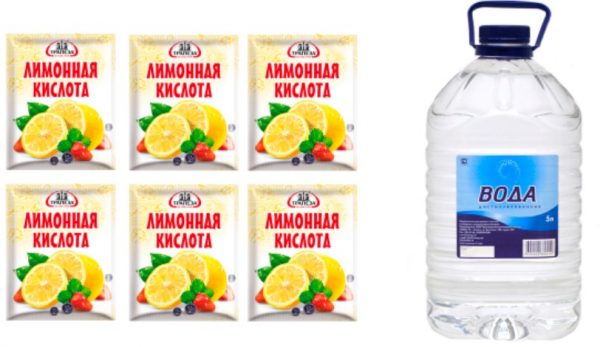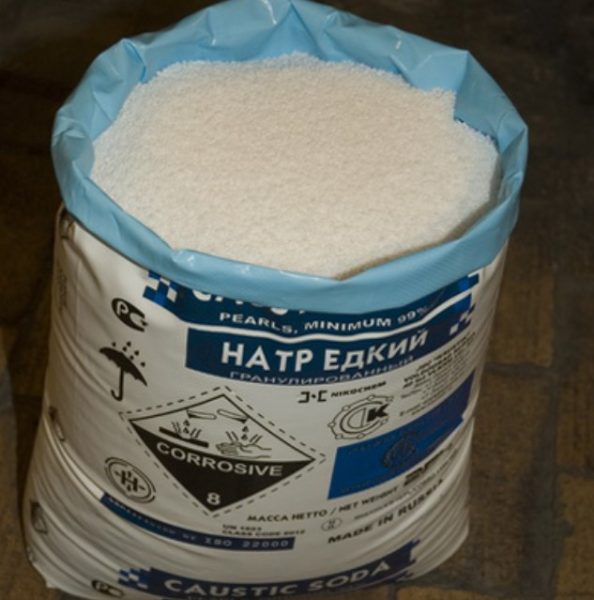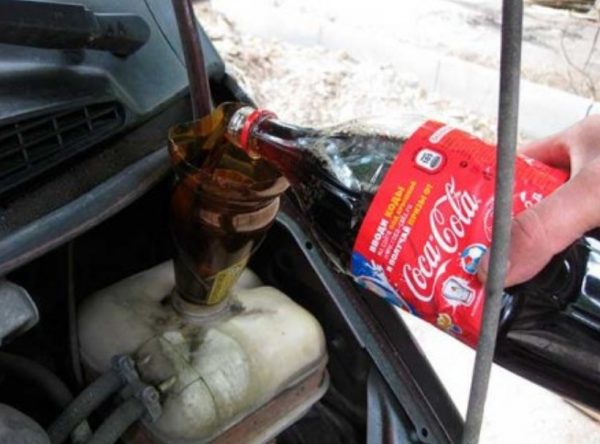
We independently flush the engine cooling system
Content
The internal combustion engine needs timely cooling. If something is wrong with the cooling system, the car does not have long to drive. That is why the driver is obliged to monitor the condition of this system and periodically flush it. Is it possible to do it yourself? Yes. Let's figure out how it's done.
Why flush the cooling system
The main element of the cooling system is the radiator. Several hoses are connected to it. Through them, antifreeze enters the motor jacket, which is a collection of small channels. Circulating through them, the antifreeze removes heat from the rubbing parts of the engine and returns to the radiator, where it gradually cools.

If the circulation of antifreeze is disturbed, the engine will overheat and seize. To eliminate such a breakdown, a major overhaul will be required. Timely flushing of the cooling system allows you to avoid disruption of the circulation of antifreeze and protects the engine from overheating. It is recommended to flush the system every 2 thousand kilometers.
Why does the cooling system get dirty?
Here are the most common causes of cooling system contamination:
- scale. Antifreeze, circulating in the engine, heats up to very high temperatures. Sometimes he even boils. When this happens, a layer of scale appears on the walls of the radiator tubes, which becomes thicker every year and eventually begins to interfere with the normal circulation of the coolant;
- poor quality antifreeze. About half of the coolants on the shelves today are fakes. Most often, antifreezes of well-known brands are faked, and only a specialist can often recognize a fake. Fake antifreeze contains a lot of impurities that clog the cooling system;
- aging antifreeze. Even high-quality coolant can wear out its resource. Over time, tiny metal particles accumulate in it from the rubbing parts of the engine, which leads to a change in its chemical composition. After that, it can no longer effectively remove heat from the motor. The only solution is to replace it, after flushing the system;
- seal failure. As mentioned above, the cooling system has a lot of hoses and tubes. Hoses can crack or burst in the cold over time. The steel pipes in the radiator often corrode. As a result, the tightness of the system is broken, and dirt gets into it through cracks, changing the chemical properties of antifreeze and interfering with its circulation.
General scheme for flushing the engine cooling system
The scheme for flushing the cooling system is always the same. The only differences are in the flushing compositions used and the time of their exposure to the system.
- The car starts and runs for 5-10 minutes. The engine is then allowed to cool for 20–30 minutes.
- The drain hole opens, the antifreeze is poured into the substituted container. Drain the coolant only after the engine has cooled down. Otherwise, you can get a serious chemical burn.
- The selected washing liquid is poured into the system. The engine starts again and runs for 10–20 minutes (the duration of operation depends on the selected product). Then the engine is turned off, cools down, the detergent composition is drained.
- Distilled water is poured into its place to wash away the remnants of the product. Perhaps one portion of water will not be enough, and the operation will have to be repeated several times until the water drained from the system is completely clean.
- A new portion of antifreeze is poured into the flushed system.
Lemon acid
Experienced motorists successfully flush cooling systems with ordinary citric acid.

It corrodes rust and scale well, without causing corrosion of pipes:
- a solution is prepared in the proportions of 1 kilogram of acid per 10-liter bucket of distilled water. If the system is not heavily contaminated, then the acid content can be reduced to 900 grams;
- the engine with acid in the cooling system runs for 15 minutes. But after it cools down, the acid does not drain. It is left in the system for about an hour. This allows you to achieve maximum effect.
Vinegar
You can also flush the system with ordinary table vinegar:
- the product is prepared as follows: 10 ml of vinegar is taken for 500 liters of distilled water;
- the resulting solution is poured into the system, the car starts and runs for 10 minutes;
- the engine is turned off, the acetic solution is drained only after 24 hours.
Video: flush the system with vinegar
Caustic soda
Caustic soda is an extremely corrosive substance that quickly corrodes the hoses in the system. Therefore, only radiators are washed with it, having previously removed them from the car. Moreover, the radiator must be copper.


If it is made of aluminum, then it cannot be washed with caustic soda. Here's how it's done:
- solution proportions: 60 grams of soda per 1 liter of distilled water;
- all holes in the radiator are closed with rubber plugs, the composition is poured in and drained in a day.
Lactic acid
The most exotic washing option. It is not easy for an ordinary motorist to get lactic acid: it is not available for free sale. It is produced in the form of a powder 36% concentrate, from which it is necessary to obtain a 6% acid solution. To obtain it, 1 kg of powder is dissolved in 5 liters of distilled water. The solution is poured into the system, and the driver drives a car for 7–10 km. Then the composition is drained, and the system is washed with distilled water.
Serum
Whey is a good alternative to lactic acid. Because it's much easier to get it. The serum does not dilute anything. It is simply filtered through several layers of gauze.


It is necessary to strain 5 liters. Then the whey is poured into the cooling system, and the driver drives 10–15 km with this “antifreeze”. After that, the system is flushed.
Coca Cola
Coca-Cola contains phosphoric acid, which perfectly dissolves scale and the most persistent pollution:
- the drink is poured into the system, the engine starts and runs for 3–4 minutes, no more;

 Coca-Cola contains a lot of sugar, so you need to flush the system after it very carefully.
Coca-Cola contains a lot of sugar, so you need to flush the system after it very carefully. - then the drink does not drain. It remains in the system for another 40 minutes;
- washing the system after Coca-Cola should be very thorough, since it contains sugar deposited on the radiator tubes.
Special formulations
Domestic motorists generally prefer to flush cooling systems with LAVR compounds.


Firstly, you can find them in any store, and secondly, they have the best value for money. Rinsing is carried out in accordance with the general scheme and instructions on the packaging of the product.
How not to flush the cooling system
Here is what is categorically not recommended to fill in the system:
- tap water. It contains mineral salts that form limescale. Any attempt to flush the system with such water leads to more clogging;
- vinegar essence. Above we were talking about 9% table vinegar. But concentrated acetic acid cannot be poured into the system at all. It will quickly corrode hoses, gaskets and other rubber elements, and the system will lose its tightness.
How to prevent contamination of the system
The engine cooling system will get dirty anyway. The car owner can only delay this moment. To do this, you should use only high-quality antifreeze purchased from a certified store. Yes, such a liquid will cost more. But this is the only way to avoid premature clogging of the system.
So, if the driver wants the engine of the car to work properly, he should carefully monitor the cleanliness in the engine cooling system. If this is not done, you can forget about the normal operation of the car.

